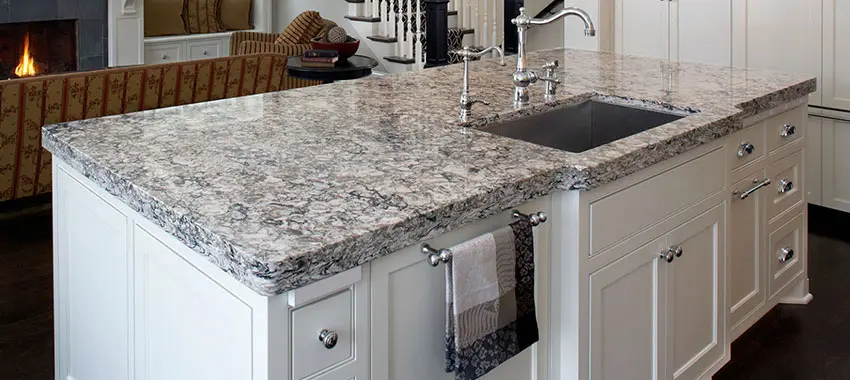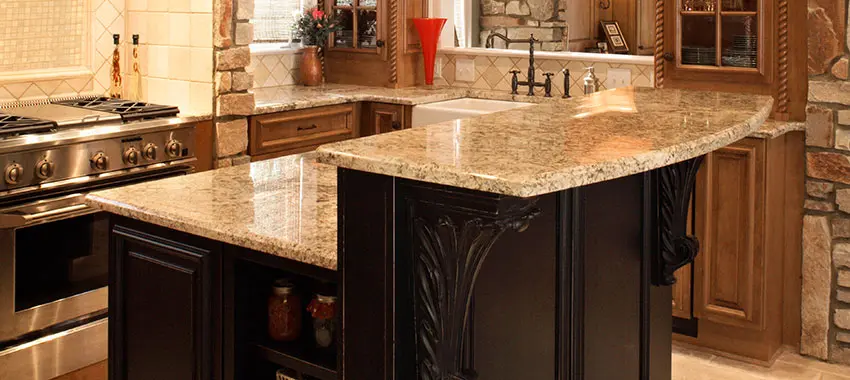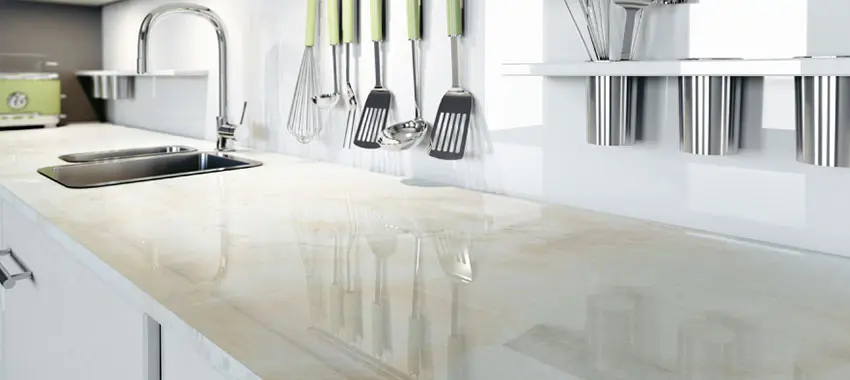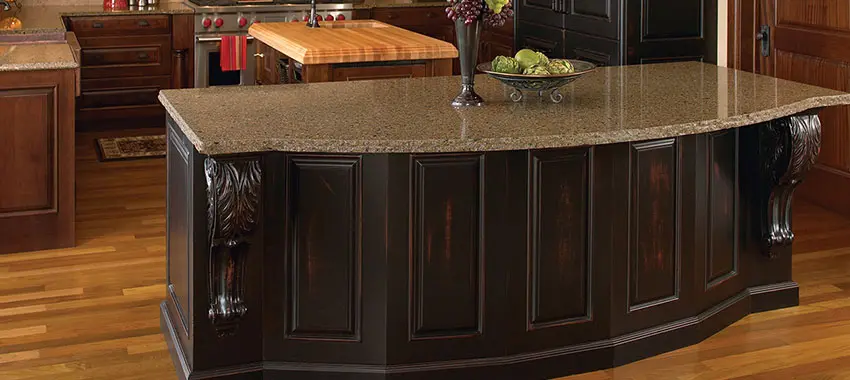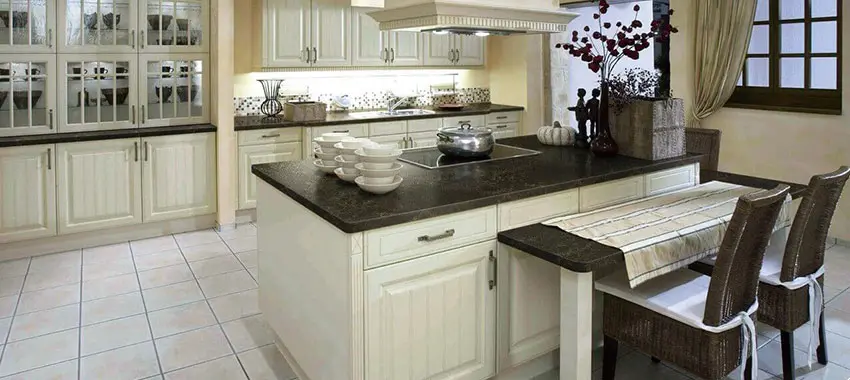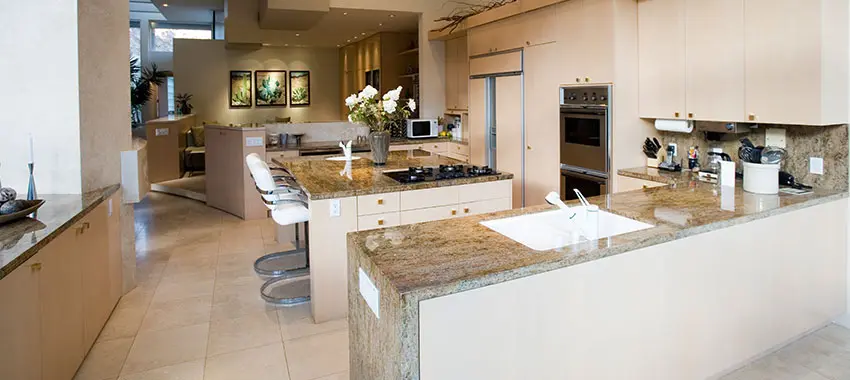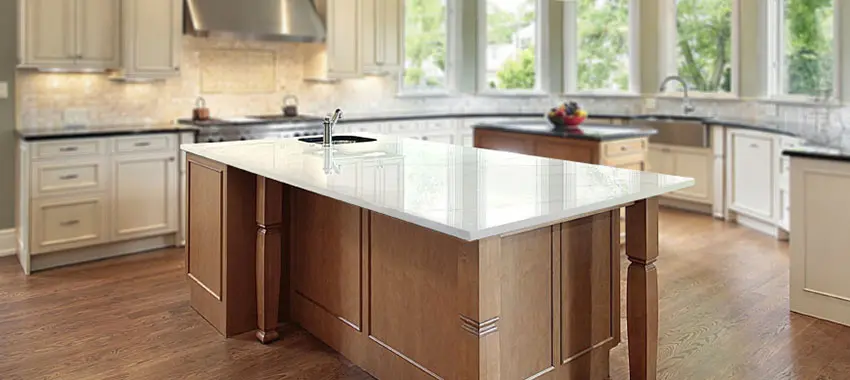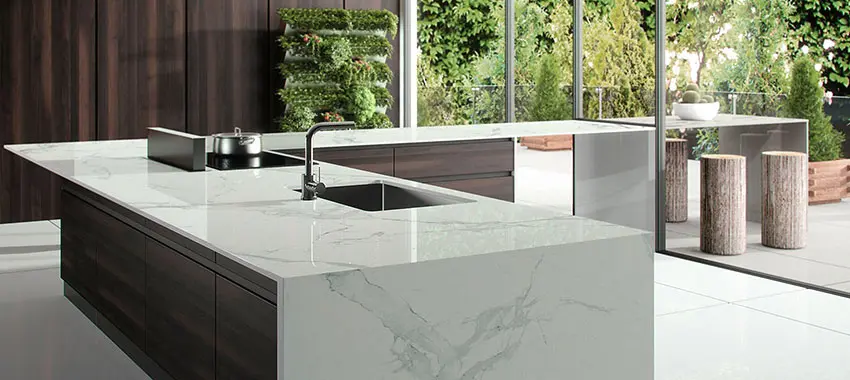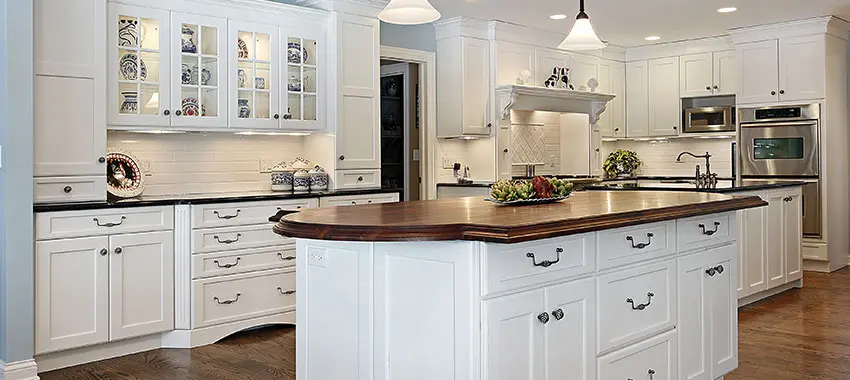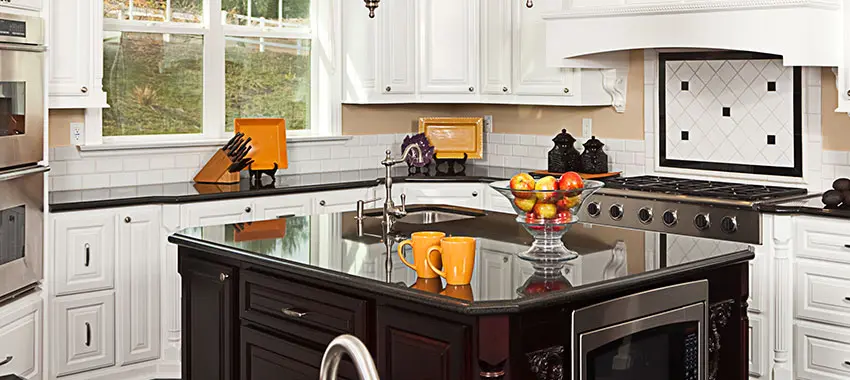Apr
What Color Granite Is Cheapest?
Granite countertops don’t come cheap, and one of the factors that affect the price of the countertops is the countertop’s color. Common colors such as white and black are cheaper compared to rare colors such as green and red. This means that if you are looking to save money, you should go for common countertop colors.
Are you wondering what color granite is cheapest? Tan and black granite are the cheapest, so if you are strapped for money, these are the ones to go for. While this is the case, there are plenty of other cheaper alternatives, including white granite, that you can buy if tan or black isn’t your color. These cheaper alternatives include:
Dallas white
Although it’s known as Dallas, this isn’t where it’s mined. The countertop is quarried in Aguia Branca, Brazil. The countertop is characterized by low water absorption and low porosity, making it an excellent choice for kitchens and bathrooms.
The countertop has a white background and dark crystals scattered throughout, giving your home an interesting appeal.
Although, most slabs have crystals, it’s not uncommon to find some slabs with brown or golden cream veins that make the countertop resemble an abstract art painting.
Due to the tight grain structure of the countertop, you don’t have to install a face resin on the countertops. The lack of resin means that you can place a hot pot on the countertop without worrying about damaging the countertops.
Although, the countertops are tough to take the heat, you should note that continued exposure to heat increases the chances of damaging them. To protect the countertops from damage, use a trivet or a hot pad every time you place a hot object on the countertops.
To get the most from the countertop, ensure that it’s installed by a professional. The Dallas white color pairs excellently with white cabinetry, but if you don’t want your entire bathroom or kitchen to be white, pair it with dark wood cabinetry such as dark walnut.
Azul Platino
Azul Platino has been around for hundreds of years, and it features an off-white background with small bluish-gray specks. It’s also common for the slabs to have black spots or even black or white veining.
Most of the Azul Platino slabs are large, making them ideal choices for kitchen islands and other areas where you need to install large-sized slabs.
Uba Tuba
It’s named after the place it’s mined. Ubatuba, São Paulo, Brazil. Besides being affordable, the countertop is also beautiful, and when you properly install and take good care of it, it will last for a long time. The countertop features a dark green background with brown, green, and gold flecks scattered across the granite slab.
In some cases, the slab has small veins that can be white, gold, or turquoise.
When you install the countertops, pair them with dark cabinetry to bring out exciting features. You can also pair them with white cabinetry for an elegant contemporary look.
New Caledonia
This is another countertop quarried in Brazil. Although it’s natural, it’s unique in that it has a uniform look such that two slabs look almost similar.
The natural stone countertop features a white background with gray or brown speckles that run uniformly throughout the slab giving it an interesting look. The heavy grain pattern makes it easy to hide the stains, so you don’t have to worry when liquids and foods spill on the countertops.
Since the countertop has a uniform look, it perfectly fits both traditional and contemporary kitchens and bathrooms. To bring out the brown and bedrock minerals, pair them with dark wood-stained cabinetry. On the other hand, if you want to bring out the charcoal flecking, pair it with light cabinetry.
Valle Nevado
It’s one of the most popular, affordable countertop granite colors, and it’s loved for its ability to coordinate with many design styles. The countertop features a tight grain structure that minimizes the need to apply a resin to it.
Due to its versatility, you can effectively pair it with both black or white cabinetry. When you pair it with white cabinetry, you bring out the tiny back crystals. On the other hand, when you pair it with black cabinetry, you bring out the pale gray tone of the countertop.
The key to getting the most from it is to work with experienced granite installers Rockville that know what they are doing.


